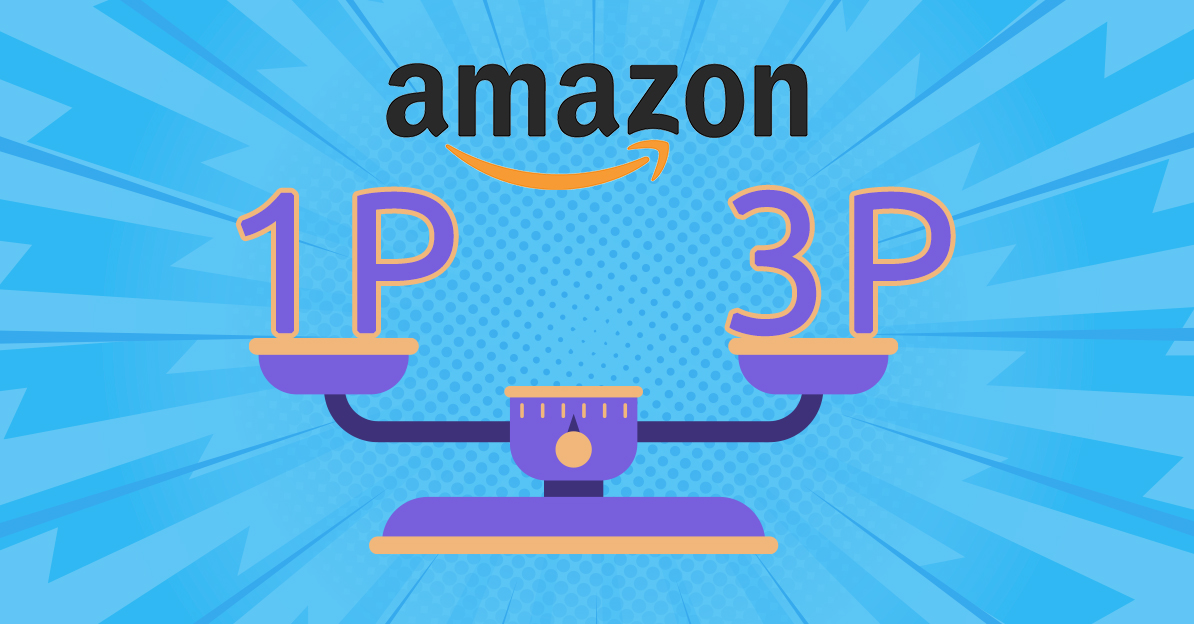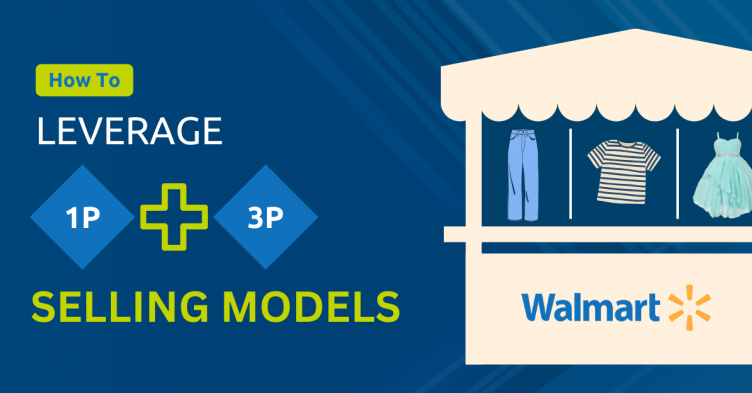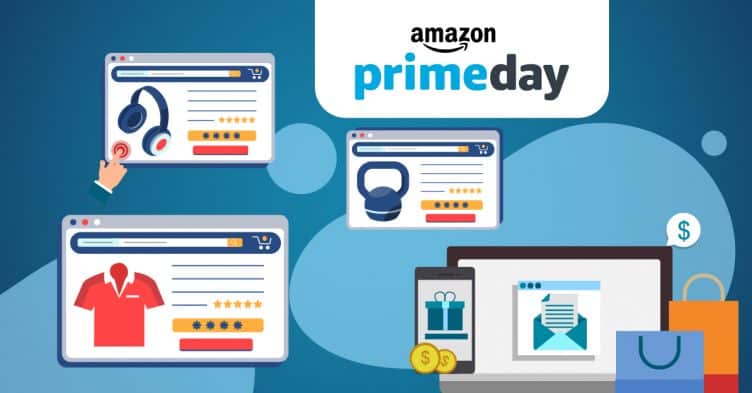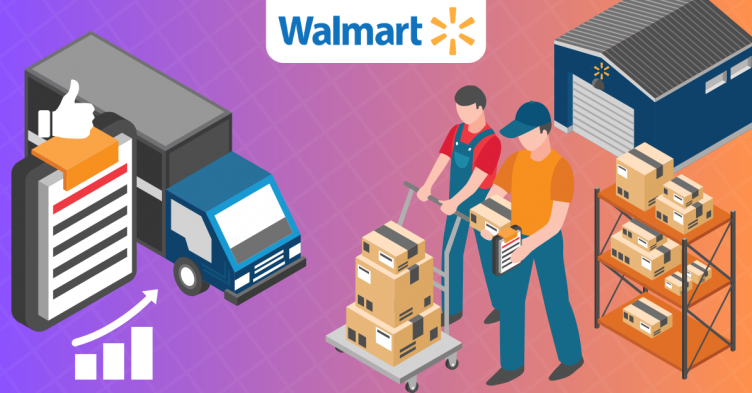There are two business models or ways a retailer, manufacturer, or brand can sell their products in Amazon, known as Amazon 1P & 3P eCommerce Sellers. In this article, we will detail what these models are and talk about each of their advantages & disadvantages.
According to CNBC, roughly 55% of consumers begin their online shopping journey on Amazon. They also state that almost 90 percent of shoppers will compare prices and products on Amazon even if they find a product on other sites and stores. So, it is paramount for a brand or retailer to be on Amazon. Before entering amazon, a seller needs to know how they want to sell on the platform. Below we provide the pros and cons of the different types of sellers on Amazon as well as some interesting statistics on the types of sellers from our data analysis on 40K jeans-related products.
Amazon 1P Sellers
1P Seller model is an option in which Amazon is the retailer of your product and you are the wholesale supplier to Amazon. It is a first-party relationship with Amazon where they provide Vendor Central access. In this model, Amazon sends you a purchase order via Vendor Central, collects the products from you, and performs all the other retailing activities like managing selling details, inventory, customer services, pricing, etc.
Amazon 3P Sellers
3P seller is the third-party relationship (also called Seller Central) in which the brand is the retailer and sells directly to buyers/consumers through the Amazon marketplace. The seller manages inventory, customer services, controls prices, and sales via seller central. You are also responsible for managing the listings, advertising products, and marketing your products on Amazon.
Which Model is right for you?
Well, it all depends on your overall business goal as both options have their fair share of advantages & disadvantages. One of the main goals of sellers on Amazon is to win the Buy Box. Winning the buy box increases the brand’s chances of winning the sale and it also gives the brand more opportunities and avenues to advertise their buy box winning product.
Winning the buy box requires vastly different strategies depending on the type of seller (1P or 3P). Therefore, understanding the pros and cons of these two types of sellers allows you to create and implement good marketing strategies that you can then leverage to increase visibility, clicks, and sales from either of these options.
Let us go through the pros and cons of both these models.
Advantages for 1P Ecommerce Sellers in Amazon:
- You can have higher brand credibility of products sold directly by Amazon. This can help Amazon vendors drive traffic and conversions to the listings.
- You have a diverse array of advertising opportunities available which means you have the potential to have significantly higher sales.
As a 1P seller, Amazon allows you to use their resources like AMS (Amazon Marketing Services) and AMG (Amazon Media Group), which are their advertising hubs to market the products. These exclusive services give more opportunities for 1P sellers to increase their visibility on the platform.
Per our data on jeans-related products, 1P seller products have much higher visibility on mobile devices and a slight edge on desktops as shown on the graphs below.
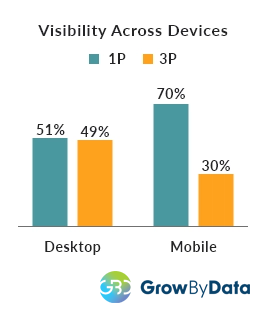
When we looked deeper into the regional visibility, we found that 1P sellers have far greater visibility across the eastern and western regions of the US than 3P sellers. But 3P sellers had a big advantage in the central region. One of the reasons for the disparity may be due to Amazon focusing on the more concentrated large markets on the coastal regions allowing 3P sellers to dominate the central region (a more spread out market).

- In the 1P model, vendors can turn inventory into cash much faster.
- Amazon handles everything which includes pricing, inventory management, advertising, order fulfillment, and customer services.
Since Amazon handles everything involved in selling the product, they dictate all aspects of the product like price, product detail page, images, ads, shipments, etc. This allows them to price the products lower than the 3P sellers. While the cheapest product doesn’t always win the sale or the buy box, it is a major factor in almost everybody’s purchase decision. Our data showed that on average the products sold by 1P sellers had their prices about 9% lower than that of 3P sellers in ‘jeans’ related products. This means that 3P sellers need to optimize their feeds by utilizing advanced product feeds, price intelligence software, and ad intelligence tools to increase their chances of winning the sale and to enhance the product experience of the shopper.
- You get access to A plus (A+) content to create enhanced content which allows you to change the layout of your listings, add more images, and add more details about your products.
Looking into our data, we found that 1P sellers had a higher percentage of products with a 4+ rating in comparison to 3P seller sold products.
Products listed by 1P sellers also had a greater number of reviews as shown on the graphs below.
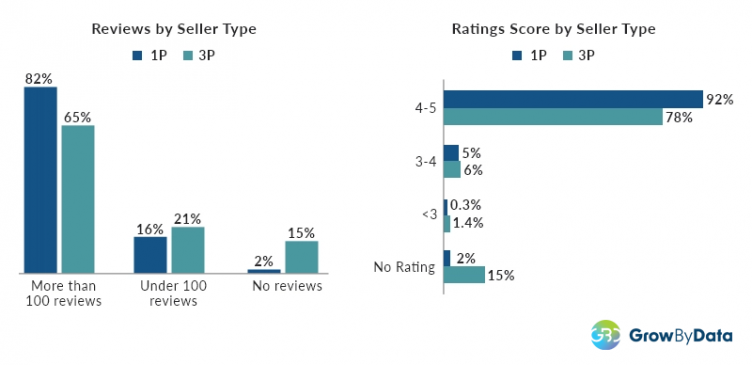
Disadvantages for 1P Ecommerce Sellers in Amazon:
- Amazon has the right to sell your products at the price set by Amazon’s pricing algorithm even if the price is below your introduced MAP (Minimum Advertising Price).
- Your profit margins are lower since you sell your products at wholesale prices to Amazon instead of retail prices to customers.
- You have less control over inventory, and it is difficult to launch new products. You can also face chargeback from Amazon if you are unable to fulfill orders on time.
This means that if certain products are sold well on Amazon, then as a 1P seller, you could end up producing/providing just those well-performing products and discontinuing others. This makes it difficult to venture into producing or providing other (new and creative) products. Per our data, products sold by 1P sellers are almost entirely under $100. While 3P sellers hold products with a wider price range of products as shown on the graph below.
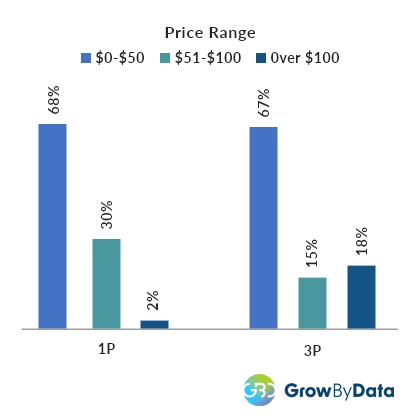
- You are completely dependent on Amazon’s purchase order supply to maintain your brand presence.
- If you want to make any changes to your Product Detail Page on Amazon, it needs to be approved by the Amazon Retail team once Amazon receives your inventory.
Advantages of 3P Ecommerce Sellers in Amazon:
- You have greater control over your product listings and branding. You can run advertising promotions, optimize product detail pages, and make changes to your strategies. You can tailor your pricing strategy per market demands with pricing intelligence and modify your ad and market strategies with marketing intelligence.
- The margin profile is more favorable as you can create retail margins instead of wholesale margins.
- You can set and have control over your product’s pricing to ensure your MAP policy is not violated.
- You get access to customer data, which includes addresses and phone numbers, making it much easier to stay competitive and react to the market.
Disadvantages of 3P Ecommerce Sellers in Amazon:
- Selling requires more active management and you are responsible for everything from customer complaints, negative reviews, shipping & handling of a product.
- You are responsible for generating optimized on-page listings, running promotions, and planning advertising campaigns.
1P sellers are bound by Amazon’s strategies and goals, which are to sell the products as quickly as possible and reduce the sales cycle. Decreasing prices in various ways is a tried and true recipe as people love sales and low prices.
Per our data on jeans-related products, we found that products sold by 3P sellers had a lot fewer promotions and discounts on them in comparison to 1P seller sold products as shown on the graph below. 1P sellers offered a much greater array of promotions and discounts. This means that 3P sellers can do one of two things: either they need to offer much more sales and discounts to compete with 1P sellers or they need to utilize tools marketing intelligence that can help them provide better data and insights, creative marketing strategies, customized pricing strategies, etc. to optimize their visibility, clicks, and sales on the digital shelf.
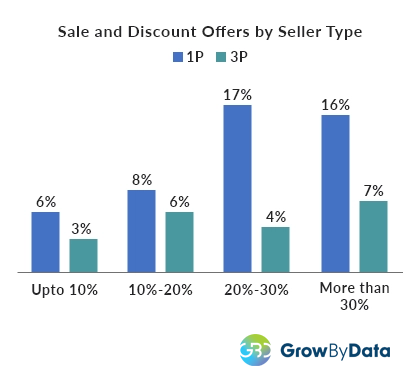
- Sellers are subject to more Amazon marketplace fees such as variable closing fees, referral fees, fulfillment and shipping fees, and additional FBA (Fulfillment by Amazon) fees.
A version of ‘Free shipping’ (including free shipping on orders above $25, $30, $35, etc.) was available by all the products sold under the 1P seller whereas 17% of the product sold by 3P sellers did not have free shipping. 1P sellers also had free returns on 14% more of their products than 3P sellers as shown on the graph below. 79% of people in the US said that free shipping would make them more likely to shop online and 54% said they wanted free returns/exchanges (Walker Sands Report page 6).
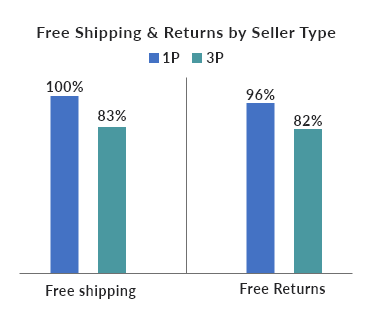
- You do not get paid until your inventory sells and Amazon pays out cash in your account. Generally, this happens every 2 weeks.
In Summary
Amazon is a massive platform that the majority of shoppers use so sellers need to have their product on it. However, a seller on Amazon needs a well-thought-out marketing strategy, good product reviews, competitive pricing, and needs to provide an excellent product shopping experience to win the sales.
The information provided above is a great starting point on understanding the pros and cons before entering the Amazon platform as a seller.
In our upcoming articles, we will provide a list of buy box winning factors on Amazon and a comprehensive guide on building holistic marketing strategies across advertising, pricing, and product experience for both 1P & 3P with a Competitive Marketing Intelligence tool.
